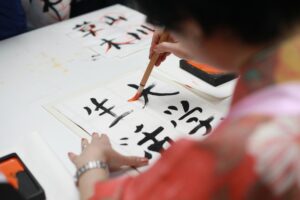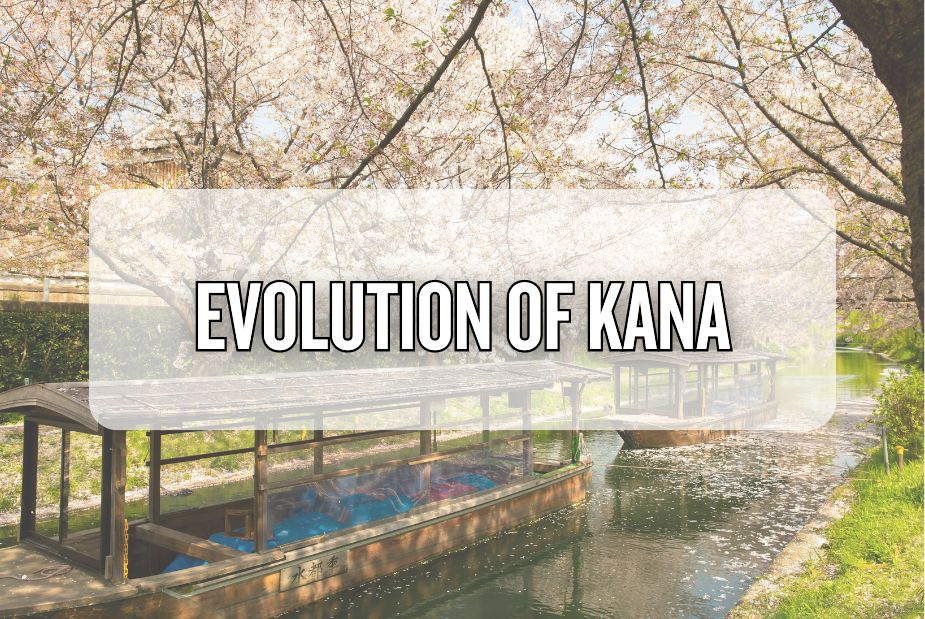The Japanese writing system combines three scripts: kanji, hiragana, and katakana. Kanji represents complex Chinese characters, while hiragana and katakana are phonetic scripts for the Japanese language. Did you know that hiragana and katakana (collectively known as kana) actually evolved from kanji characters? This evolution created a fascinating blend of writing forms that catered to different needs within Japanese society, enriching Japan’s linguistic heritage.
Historical Background of Japanese Scripts
Hiragana and katakana emerged during the Heian period (794-1185) in Japan, a time of significant cultural and political development. At that time, kanji was the only script in use, having been adopted from China centuries earlier. However, kanji was complex and difficult to master, especially for those not educated in Chinese. This posed a challenge for the majority of the population, including women and commoners, who had limited access to formal education.
Development of Hiragana

To address this issue, Japanese scribes developed hiragana and katakana. Hiragana emerged as a simplified, cursive form of kanji, making it easier to read and write. Women in the Japanese imperial court particularly embraced it, using it to write personal diaries, poems, and letters. These women, often excluded from formal education, created a vibrant literary culture known as "women's hand" (女手, onna-de). For instance, The Tale of Genji, written by Murasaki Shikibu, showcases the elegance and expressiveness of hiragana.
Development of Katakana
Buddhist monks developed katakana to transcribe Buddhist texts from Chinese. Unlike hiragana, katakana was more angular and straightforward, making it suitable for scholarly texts and annotations. Monks created katakana by taking parts of kanji characters and combining them in innovative ways to represent different sounds. This script allowed for a more precise and consistent way to transcribe the phonetic aspects of the Japanese language.
Evolution from Kanji Characters

Hiragana and katakana characters both derive from kanji characters, but they represent sounds rather than meanings. Hiragana characters emerged by simplifying and modifying the shapes of kanji characters to represent different sounds. For example, the kanji character for "ki" (幾) was simplified to create the hiragana character "ki" (き). This process applied to the formation of all hiragana characters, resulting in a set of 46 unique symbols.
To learn more about kanji and its historical roots, check out our article on “The Origins of Kanji” here.
Katakana's Formation
In a similar fashion, katakana characters emerged by extracting parts of existing kanji characters to create unique symbols that represented phonetic sounds. For instance, the katakana character for "ka" (カ) derived from the kanji character "ka" (加). One can see upon close inspection that the katakana symbol is indeed a simplification of its kanji predecessor, being that it resembles the left-hand side of the kanji character. This method of kanji simplification generated all 46 katakana characters corresponding to the same sounds as their hiragana counterparts.
Modern Usage and Significance

Hiragana and katakana have become indispensable components of modern Japanese writing. Hiragana primarily writes native Japanese words and grammatical elements, such as particles and verb endings. This script is crucial for connecting kanji characters and conveying the grammatical structure of sentences.
In contrast, katakana writes loanwords from foreign languages (such as ホテル ("hoteru") for hotel), onomatopoeic words, and names of plants, animals, and minerals. It also serves for emphasis, similar to italics in English, and for technical and scientific terms. The distinct angular style of katakana helps it stand out in text, making it easier to identify foreign or specialized terms at a glance.
To summarize, hiragana and katakana are essential components of the Japanese language that evolved from kanji characters. They were developed to simplify the Japanese writing system and make it more accessible to the majority of the population.
Today, hiragana and katakana continue to be used in various ways, from literature and daily communication to technical writing and international exchanges. Their development not only addressed practical needs but also enriched the cultural and literary heritage of Japan, making them integral to the nation's identity and linguistic tradition.
As always, stay curious and keep learning!
Ready to start your Japanese language learning journey? Check out Immersion Language Club's beginner content here!


